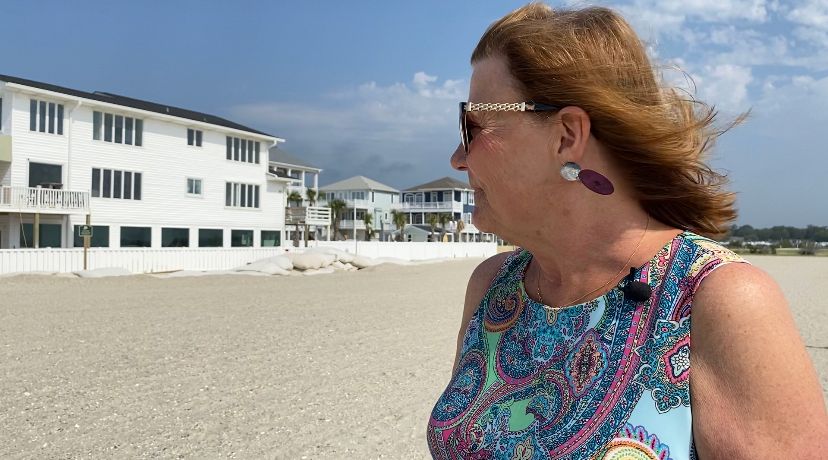BRUNSWICK COUNTY, N.C. — It’s officially Hurricane season, and it’s hard to talk about storms without talking about erosion.
In Ocean Isle Beach, one woman had to leave her dream home of 20 years after facing the trials and tribulations that hurricanes and erosion brings. Now, after OIB’s terminal groin project has been completed, she has hope for her old house and the beach she loves.
What You Need To Know
- The Terminal Groin Project was completed earlier this year
- A terminal groin is similar to a jetty and is built perpendicular to the shore and hold sand in place to try to mitigate erosion
- Before the groin, erosion and flooding from hurricanes forced homeowner Glenda Browning out of her home
For nearly 20 years, Glenda Browning dreamed of the house on the farther point on the east end of Holden Beach in Ocean Isle.
“I saw Holden Beach for the first time, and it caught my breath, and I just stopped, and then I turned and saw to my left this house,” Browning said. “And then I turned, and the first words out of my mouth were ‘Oh, those are lucky people.’”

Two decades later, she would be one of those lucky people. Browning and her husband Bill bought the house in 2017 and made it a home. However, Mother Nature had other plans.
“The last hurricane was Isaias, and it was really supposed to be a tropical storm,” Browning said. “But it decided it was going to make an appearance as a hurricane and made landfall here for 45 minutes at 95 miles an hour.”
Their beloved home was ripped apart during the hurricane — and it wasn’t the first time.
“So in the 36 months that we lived in the house, we were out of the house for 14 and a half months,” Browning said. “After we did our initial remodel, we had to do two more.”

With their dream house now turning into a nightmare situation, they decided to move. For everyone else who stayed put, something had to be done.
The city decided to build a terminal groin, which is a structure that stretches from shore to sea and aims to reduce erosion. It's similar to a jetty, and it's built perpendicular to the shore and holds sand in place to try to mitigate erosion.
After its completion earlier this year, it’s been helping provide protection from erosion and other effects from coastal storms.
“When we were starting to lose the end of the east end due to the erosion, people were getting a little leery about coming or they didn’t want to sit and watch all of the island being shifted and not as attractive,” Browning said. “And of course now it’s coming back to its former glory, and the groin is going to help keep the re-nourishment.”
Now, the groin is giving homeowners on the beach a sense of hope, and giving the dream house a new chapter.

“It’s like a cat with nine lives,” Browning said. “It takes a beating and has been really hurt, and then she comes back, and she’s coming back.”
Although that chapter may not include the Brownings, they’re very happy with where they are now.
“Well, you know, that dream was hard to get over, and I loved very much living there, but I think that the best parts of it will go with me wherever I go,” she said.
Seawalls — such as terminal groins — were banned in North Carolina from 1985 to 2011. In fact, the National Audubon Society unsuccessfully sued the United States Army Corps of Engineers and Ocean Isle Beach to challenge the construction of the groin due to concerns about creating further erosion and destroying an environment for birds. However, those on the island say that the need for some sort of seawall was immediate, and say they are already seeing the benefits.
You can learn more about the OIB terminal groin here.
You can learn more about Browning’s story here.



